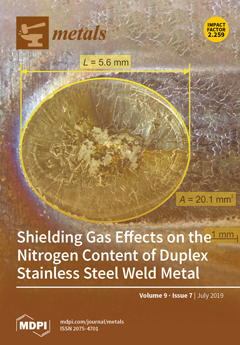Open AccessArticle
Laser Shock Peening: Toward the Use of Pliable Solid Polymers for Confinement
by
Corentin Le Bras, Alexandre Rondepierre, Raoudha Seddik, Marine Scius-Bertrand, Yann Rouchausse, Laurent Videau, Bruno Fayolle, Matthieu Gervais, Leo Morin, Stéphane Valadon, Romain Ecault, Domenico Furfari and Laurent Berthe
Cited by 26 | Viewed by 4515
Abstract
This paper presents the first extensive study of the performances of solid polymers used as confinement materials for laser shock applications such as laser shock peening (LSP) as opposed to the exclusively used water-confined regime up to now. The use of this new
[...] Read more.
This paper presents the first extensive study of the performances of solid polymers used as confinement materials for laser shock applications such as laser shock peening (LSP) as opposed to the exclusively used water-confined regime up to now. The use of this new confinement approach allows the treatment of metal pieces needing fatigue behavior enhancement but located in areas which are sensitive to water. Accurate pressure determination in the polymer confinement regime was performed by coupling finite element simulation and experimental measurements of rear free-surface velocity using the velocity interferometer system for any reflector (VISAR). Pressure could reach 7.6 and 4.6 GPa for acrylate-based polymer and cross-linked polydimethylsiloxane (PDMS), respectively. At 7 and 4.7 GW/cm
, respectively, detrimental laser breakdown limited pressure for acrylate and PDMS. These results show that the pressures produced were also as high as in water confinement, attaining values allowing the treatment of all types of metals with LSP and laying the groundwork for future determination of the fatigue behavior exhibited by this type of treated materials.
Full article
►▼
Show Figures





